Justicia ; common name- the Shrimp plant is an easy to grow small shrub. It will grow to around 0.5 metres tall, and has a long flowering season. The flowers are usually white in colour and emerge from the colourful bracts which are arranged in a shape resembling a shrimps body. They are happiest in a semi-shaded spot, but will also tolerate a more sunny spot. The plants benefit from regular pruning to keep the growth compact, otherwise the growth becomes a bit leggy. Suited for temperate and warmer climates. it is very easy to propagate from cuttings in warmer months. This plant is growing in a Harbourside garden in Sydney.
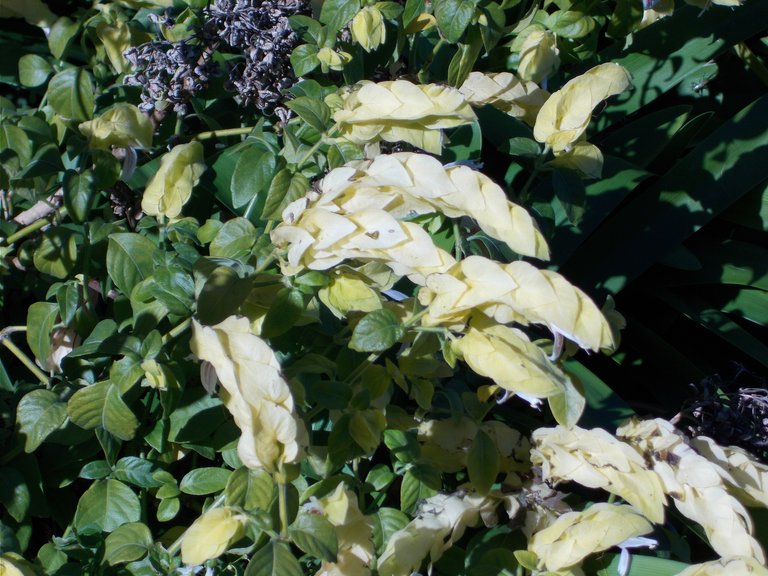
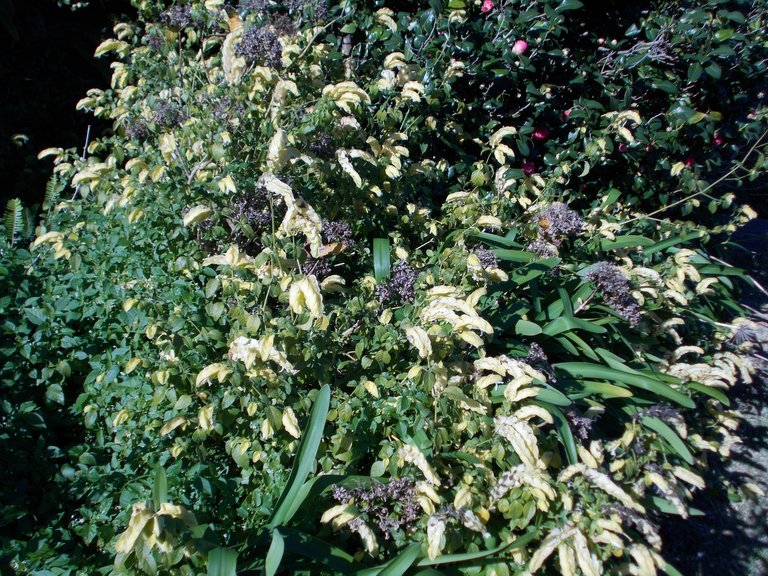
A terrific tropical shrub to use in pots on patios, or feature in entryways. Bright rosy-pink to salmon-colored flower-like bracts are sure to garner attention with their unique shrimp-like appearance. Requires little care other than occasional trimming. A frost-tender evergreen that will bloom nearly year-round in warmer winter regions.
https://www.monrovia.com/plant-catalog/plants/1720/shrimp-plant/
Fav. comment Award !! Thanks for the great Pics selection and information.
Shrimp plant (Justicia brandegeana) is an attractive tropical perennial and a must-have for a hummingbird garden.
This easy-to-grow plant can reach two to six feet tall, and is easily recognized by the colorful, drooping, shrimp-like bracts it produces. But it's the white flower inside the bracts that attracts both hummingbirds and butterflies. The plant commonly called golden shrimp plant is a different but related species.
The Florida-Friendly shrimp plant can be grown throughout the state and blooms year-round in mild climates. It will be killed back by frost but usually returns in the spring. Shrimp plant can be planted in full sun or part shade, and will grow best in rich organic soil. New plants may look somewhat twiggy, but with light pruning and a little care will quickly spread to form an attractive clump. Patient gardeners who keep an eye out in the early evenings may be rewarded with a visit from tiny visitors.
source= http://gardeningsolutions.ifas.ufl.edu/plants/ornamentals/shrimp-plant.html
Fav. Comment Award !! Congrats for your choice of great Pics and information.
Thanks for you @ctrl-alt-nwo
Hi ctrl-alt-nwo, I'm glad to see you again you're active steemian and thanks for helping me continuously. I remember I saw this flower before. The Shrimp mean flower looks like to real Shrimp.Nice photo clicks with better description friend. I add some info with flowers images.
he Mexican shrimp plant, or Justicia brandegeeana, is a native of Guatemala, Honduras, and as its name implies, Mexico. It is an evergreen shrub that rarely grows more than 3 or 4 (1 m) high and about as wide and thrives in the understory, a partially shaded area of tropical forests. The plants grow in many stemmed clumps and in USDA plant hardiness zones 8-11 growing shrimp plants in gardens has become so prevalent, it has now naturalized in many areas. This is largely due to the ease of shrimp plant propagation. The stems, which tend to become leggy with age and the sparse oval, green leaves, sometimes speckled with white, are not particularly attractive, but the bracts, which hold tiny and insignificant white flowers, are definitely eye catching. Each stem is tipped by a spike of light pink to rusty red bracts that arch into a form that looks remarkably like shrimp. There are cultivars of yellow and lime green as well.
While these beauties aren’t fussy, there are a few things you should know about how to care for a shrimp plant to get the most from your shrub. It does best in loamy or sandy soil that is well drained. It doesn’t do well with wet feet.
Thank you for watching.
Images from google.
Contents source: https://www.gardeningknowhow.com/ornamental/shrubs/shrimp-plant/growing-shrimp-plants.htm
Silly Sausage Award !! You have chosen some excellent pics for your comment.
Golden shrimp plant is an evergreen shrub with branching, woody stems. Long, dark-green leaves grow in pairs opposite one another and are deeply veined.
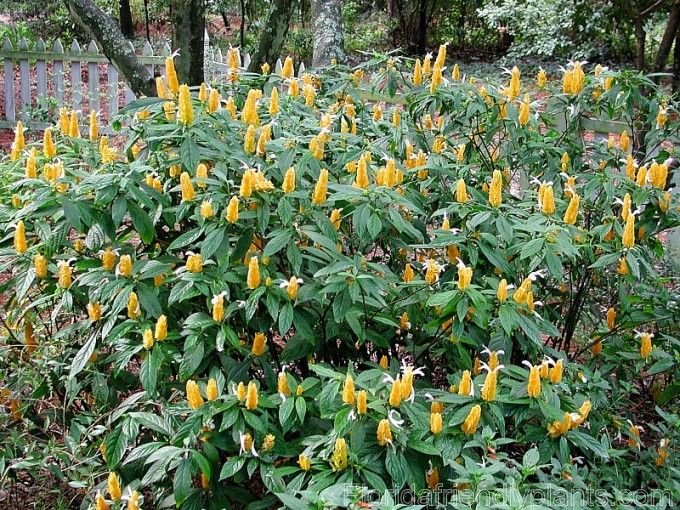
The real attraction is the plant's magnificent flower spikes, featuring bright golden bracts that grow to 4 in (10 cm) long and last from spring through the end of summer.
These long-lasting, upright bracts give this plant its other common name, Lollipop Plant. (I don 't really see a resemblance, do you?)
Long, white flowers emerge from the flower bracts, opening in succession from the bottom of the bract to the top.
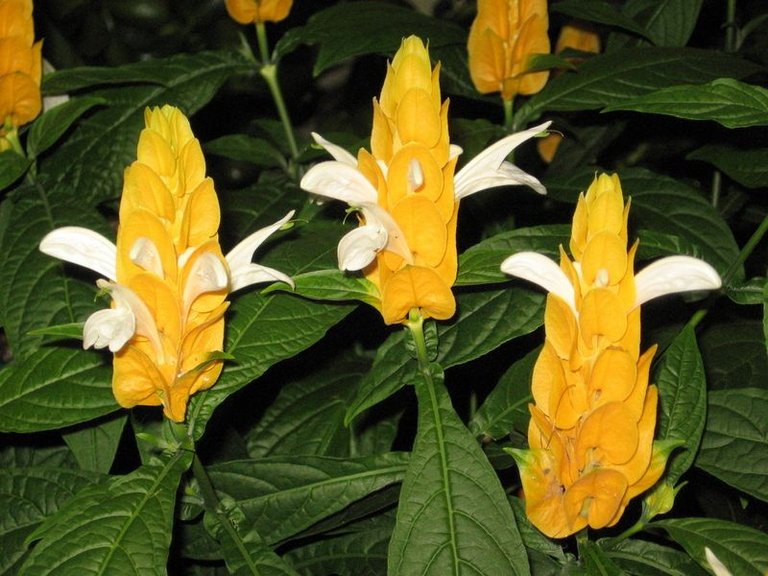
family, along with the other shrimp plant, Justicia brandegeana. The two plants look similar, the biggest differences are that the Pachystachys has bigger leaves and its flower spikes are held upright, rather than arching to one side.
Prune it back. Golden shrimp plant is a perennial shrub that will last for several years. It'll get tall and leggy if not pruned back regularly. Prune it back hard to control this plant's growth -- by half when necessary -- when the plant starts new growth in spring.
Pinch your plant. Pinch off the growing tips often to encourage branching. You'll be rewarded with a much nicer-looking plant that is compact and bushy. If you want, you can propagate the stem tip cuttings for more plants.
Repot in spring when roots show through the bottom of the pot. You can keep potting up -- into a larger pot each year and allow it to grow into a shrub. But as I mentioned before, this plant will drop its old leaves and become leggy if you don't prune it back.
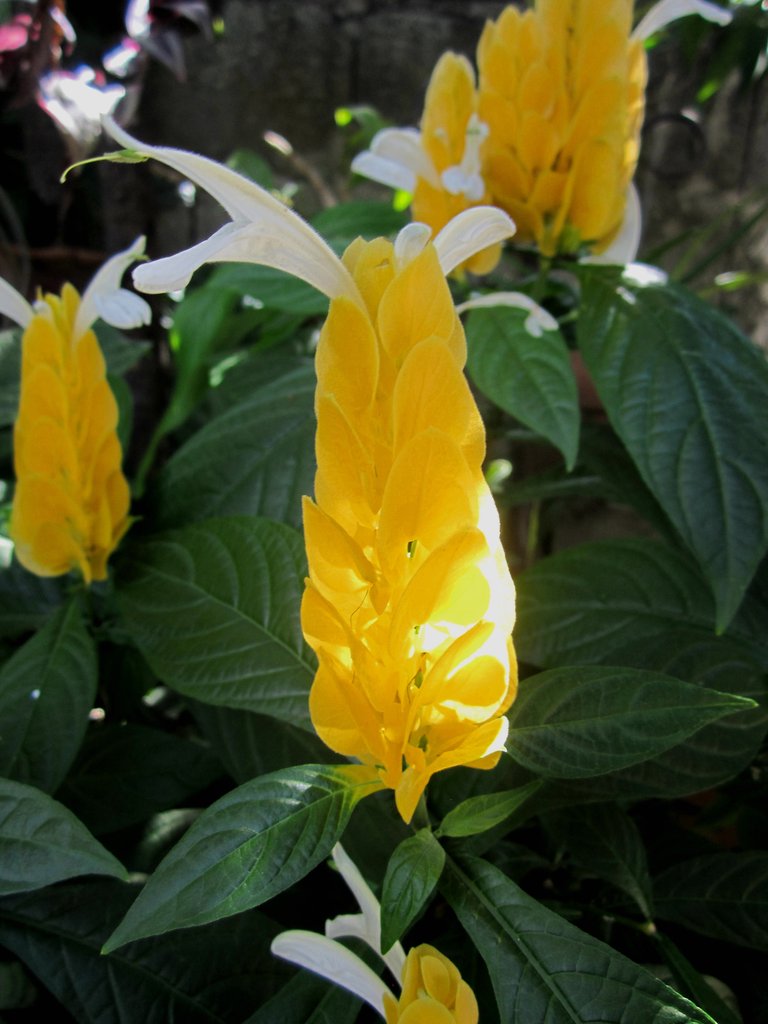
source
http://www.guide-to-houseplants.com/golden-shrimp-plant.html
magoo-2 found a series of multi accounts of a same owner is following your articles to cheat your generous rewards.
magoo-2 found these accounts are suspicious & can be multi accounts of a single owner. Conclusion is based on last 30 days transactions:
@moniristi
@shishiristi
magoo-2
Check our latest multi comment spam update report
Shrimp plants
(Justicia brandegeeana)
are a delightful landscape addition for the warmest climates, yet they can be grown as indoor or greenhouse plants elsewhere. The flowers are as long-lasting as they are remarkable. It has oval, pointed, soft green leaves.
There are different varieties and colors of shrimp plants such as golden, yellow, red, blue or white. Shrimp Plant, like any fast growing perennial which flowers a lot, needs a good pruning at the end of the season so the plant can rest. Pruning brings on abundant flowering.
Yellow shrimp plant
The flowers are hidden amongst distinctive clusters of drooping shrimp pink bracts which overlap closely and appear at the ends of the shoots. The plant may not flower for two or three years, until it is mature, but when it does, the bracts will persist for most of the summer.
Yellow shrimp plant
The striking shrimp-like bracts last most of the summer; good light improves the colour. Some leaves may drop in winter. Cut back affected stems in early spring when the plant is repotted and started in growth. Hummingbirds and butterflies love this plant and visit it often, especially in twilight.
Yellow shrimp plant
Red shrimp plant
Mexican shrimp plant
Text Source
Congratulations @ctrl-alt-nwo!
Your post was mentioned in the Steemit Hit Parade in the following category:
When Golden Shrimp Plant is grown outdoors, it may experience tip damage in a frost and lose leaves if the temperatures drop below 50 degrees. This is a good time to prune the plant hard, to about 12 inches above the ground. This will encourage bushy growth, as older shrimp plants tend toward legginess. Even plants that don’t experience cold temperatures should be pruned in winter.
As a houseplant, Golden Shrimp responds well to being moved outdoors for the summer months. Give it a sunny spot on the patio and be sure to water frequently to keep the soil moist. When temperatures drop, move it indoors to the warmest possible location. You can cut back a bit on watering over the winter, but be sure to keep the humidity up by misting and give it as much direct sun as possible. Prune the plant by regularly cutting back hard the inflorescence stems after they die. This will encourage new fuller growth.
http://www.birdsandblooms.com/blog/golden-shrimp-plant/
Also known as lollipop plant, yellow shrimp plant (Pachstachys lutea) is semi-tropical, but don't let that stop you from trying it this year. They usually flaunt gaudy flowers and foliage (if they didn't, people wouldn't plant them) and they love hot weather. No matter how hot it gets, they continue to bloom while many temperate plants either go dormant or fry.
Yellow shrimp plants gets its name for the upright, yellow cones of bracts that appear atop its stems. Small, white flowers emerge from these bracts and attract both hummingbirds and butterflies.
The cones are about 3-4 inches long and very showy. They self-clean, meaning that as soon as a cone gets old, it drops off by itself and is replaced by a new one. No deadheading or grooming needed. The show continues from spring until fall.
It grows 4-5 feet tall and wide. That sounds big, but you can easily keep it smaller and bushier through occasional pruning, which does not diminish flowering.
Red Shrimp Plant
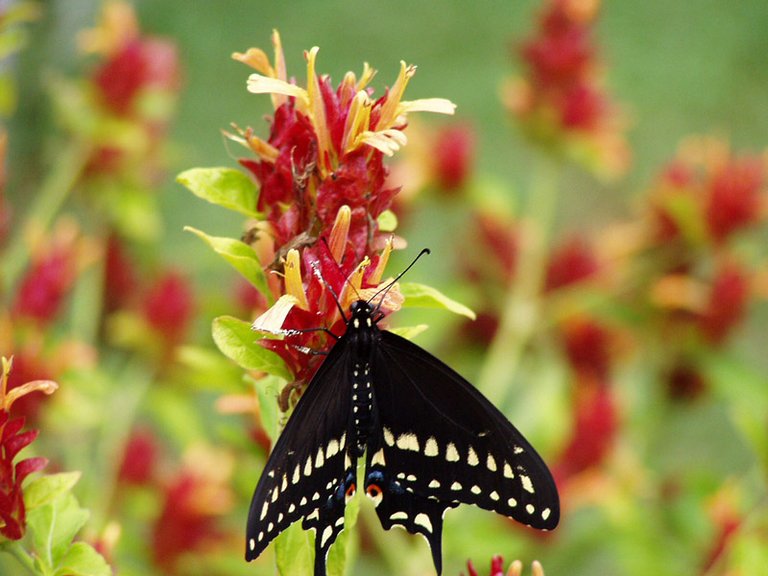
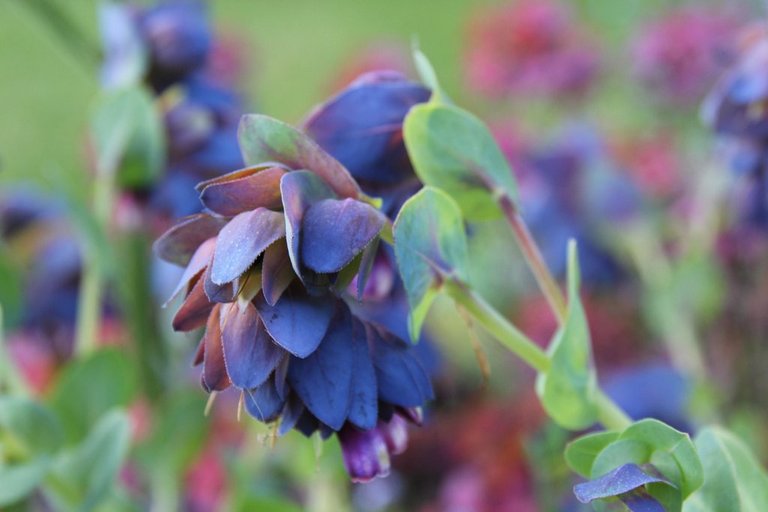
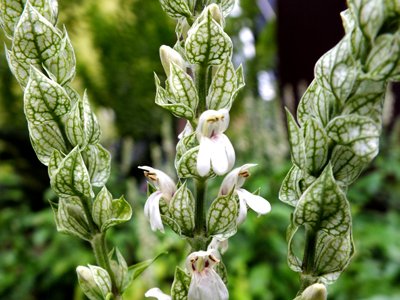
Blue Shrimp Plant
White Shrimp Plant
Resources
Thank you for posting @ctrl-alt-nwo.
Lovely photographs and interesting plant information.
......have not heard of this one before....wonder if it would be suitable for a shrubbery walk....what do you think?
All the best to you.
Cheers!
Perfect for a shrubbery walk !!
@ctrl-alt-nwo,
Oh I see a lot of Shrimps are in there! I think I didn't see this plant and flower in my country Sri Lanka! It has most similarities to Shrimp body! Fantastic photography and valuable description of unseen flower! Thank you!
Cheers~
How to Care for Your Shrimp Plant
The shrimp plant, also known as Justicia brandegeana, is a frost-tender, evergreen sub-shrub native to areas of Mexico. In the United States, shrimp plant is winter hardy in zones 8 through 11 only, but gardeners in cooler areas can still enjoy the plant indoors. The plant's common name derives from its red, orange, pink or yellow blooms that resemble cooked shrimp and cover the plant nearly year-round with proper care. The shrimp plant reaches 1 to 5 feet in height, depending on the growing location. Often used in mixed perennial beds, shrimp plant also attracts hummingbirds to the garden.
Plant shrimp plant during spring after the risk of frost has passed. Choose a location that receives six to eight hours of sunlight each day and consists of moist, fertile, well-drained soil. Space shrimp plants at least 2 to 3 feet apart.
Apply a 2-inch layer of organic mulch to the ground surrounding the shrimp plant to insulate the soil, stunt the growth of weeds and increase moisture retention. Start the mulch 3 to 4 inches from the crown of the plant (where the stems meet the roots) to minimize the risk of fungal diseases or rotting.
Water shrimp plant once every five days during the first month of growth to help establish the root system. Reduce the watering frequency to about once each week thereafter, and once every two weeks during winter.
Feed the plant once each month using a balanced liquid fertilizer to provide proper nutrition for root, flower and foliage formation. Apply following the manufacturer's instructions for the best results and water thoroughly after feeding to prevent root injury.
Prune shrimp plant immediately after flowering ends to promote a compact, bushy growth habit and to improve the plant's health. Use pruning shears to remove all leggy, diseased, damaged and excessively long branches.
https://www.gardenguides.com/100266-care-shrimp-plant.html
Very nice choice of Pics !!
I had seen some varieties of this shrub @ctrl-alt-nwo and they really have some amazing flowers. It is good for any garden because of the unusual form of the flowers.
How To Grow Shrimp Plants – Growing Information And Shrimp Plant Care
About Shrimp Plants The Mexican shrimp plant, or Justicia brandegeeana, is a native of Guatemala, Honduras, and as its name implies, Mexico. It is an evergreen shrub that rarely grows more than 3 or 4 (1 m) high and about as wide and thrives in the understory, a partially shaded area of tropical forests. The plants grow in many stemmed clumps and in USDA plant hardiness zones 8-11 growing shrimp plants in gardens has become so prevalent, it has now naturalized in many areas. This is largely due to the ease of shrimp plant propagation. The stems, which tend to become leggy with age and the sparse oval, green leaves, sometimes speckled with white, are not particularly attractive, but the bracts, which hold tiny and insignificant white flowers, are definitely eye catching. Each stem is tipped by a spike of light pink to rusty red bracts that arch into a form that looks remarkably like shrimp. There are cultivars of yellow and lime green as well. If you live in zone 8-11, growing shrimp plants can be a welcome addition to your landscape. They are easy to grow and will thrive in the warm temperatures of the south. Once established, they will even survive the occasional hard frost, dying back to the ground and sprouting again when warm weather returns.
Growing Information and Shrimp Plant Care While these beauties aren’t fussy, there are a few things you should know about how to care for a shrimp plant to get the most from your shrub. It does best in loamy or sandy soil that is well drained. It doesn’t do well with wet feet. Well rooted plants are fairly drought tolerant, but like most tropicals, it thrives in high humidity. While they will grow in full sun to partial shade, growing shrimp plants where they receive morning sun is ideal. They need the sun to bring out the brightest colors and, yet, too much sun will cause the colors to fade too soon. Shrimp plant care should also include frequent trimming to encourage fuller growth and more bloom. Once the first bracts appear, a shrimp plant will bloom for months and then will rest for a short time before blooming again. The best time to trim and prune is when blooming begins to slow.
https://www.gardeningknowhow.com/ornamental/shrubs/shrimp-plant/growing-shrimp-plants.htm
Hello Friend @ctrl-alt-nwo! These flowers that you are telling are so amazing! I have never heard of such! They really look like gigant shrimp! Thank you for sharing! I will again give you a field flower from Ukraine :)

Justicia plants have small flowers, 1.5-2 cm long, arranged in series in the form of panicles or growing grains, spreading hair, and coming out of the tip of the armpit or stalk.
Justicia fruit is elliptical until it is pushed upward, about 1.3 cm. Justiciaa has long been used as a medicinal plant.
In Southeast Asian countries, it is often used as a fever, stimulates vomiting, anti-rheumatism, treatment of headaches, facial muscle paralysis, eczema, eyes and ear pain.
Chemical properties and pharmacological effects: Spicy, slightly acidic, neutral. Blood circulation (promoting circulation, irregular blood cessation), antireumatism.
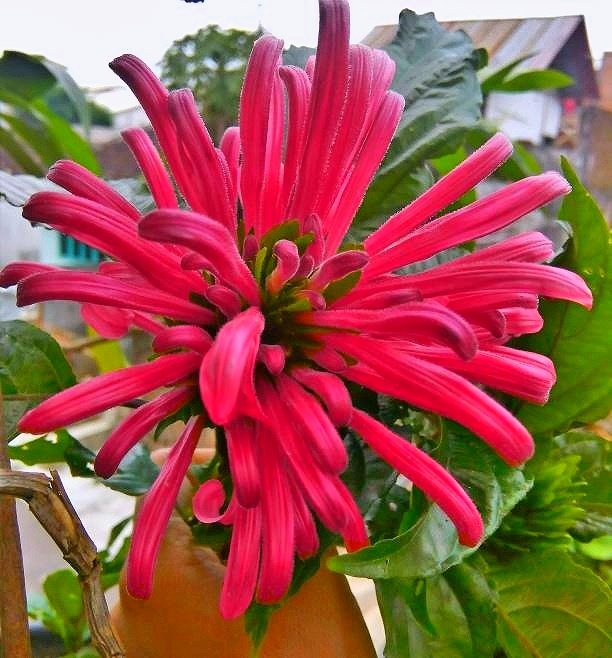
Sources :
https://www.google.co.id/url?sa=t&source=web&rct=j&url=https://www.jamunusantara.com/amp/gandarusa-justicia-gendarussa-burm-f&ved=2ahUKEwjHmv3rkeTcAhXFbisKHadBBZ4QFjARegQIAxAB&usg=AOvVaw2-ZbbZCv7wBMR18ixOdXcn&cf=1
magoo-2 found a series of multi accounts of a same owner is following your articles to cheat your generous rewards.
magoo-2 found these accounts are suspicious & can be multi accounts of a single owner. Conclusion is based on last 30 days transactions:
@seha76
@faisalrizal2018
@roman-sabil
magoo-2
Check our latest multi comment spam update report
A terrific tropical shrub to use in pots on patios, or feature in entryways. Bright rosy-pink to salmon-colored flower-like bracts are sure to garner attention with their unique shrimp-like appearance. Requires little care other than occasional trimming. A frost-tender evergreen that will bloom nearly year-round in warmer winter regions.
.

Source
As the plant receives more sun, the amount of creamy white on the speckled leaves will increase, and vice versa. The flowers emerge from bracts that form off the stems. The bracts start out white, but with more sun exposure they turn anywhere from pale pink to deep salmon. A chain of bracts will continue to grow until it falls off in most cases; thus the chains can grow anywhere from a few inches to nearly a foot in length. Flowers emerge from the bracts; usually they are long, thin, and white with speckled maroon throats.
Blooming continues for months once it has begun, then halts for a short period before starting again. The flowers attract hummingbirds and butterflies.Pollination is usually by hummingbirds.
.
.jpg)
Source
This heat-loving plant, and we have it grown only in domestic conditions. MOST COMMON KINDS
Justice Beloperone
Justice Brandege (Justicia brandegeeana) was formerly known as Beloperone (Beloperone Guttata). Its motherland is Mexico, in nature it is an evergreen small, highly branched half-shrub up to 1 m high, with elliptical, pointed petioles at the ends about 10 cm long. They grow a white perone at home for a long time, this plant is prized for its ability to blossom all year round. Flowers appear all year round at the ends of shoots, have bright bracts of pink, reddish-yellow color. The flowers themselves are white, with maroon specks in the throat. There are several varieties that differ in the color of the bracts - in some they are bright yellow, others have pink or brick color. Flowering is long, it is also noteworthy that, after flowering, the bracts retain their bright color for a long time, which makes this kind of justice attractive almost throughout the year.
http://greendom.net/catalog/e/389-justicia.html
Thanks for the interesting post.
Justicia brandegeeana
Justicia brandegeeana (Mexican shrimp plant, shrimp plant or false hop[2]) is an evergreen shrub in the genus Justicia of the family Acanthaceae, native to Mexico,[1] and also naturalized in Florida.
It grows to 1 m tall (rarely more) with spindly limbs. The leaves are oval, green, 3-7.5 cm long. The flowers are white, extending from red bracts which look a bit like a shrimp, hence the shrub's common name, shrimp flower.
The species is named after the American botanist Townshend Stith Brandegee (1843–1925); the scientific name is commonly seen misspelled "brandegeana".
Description
J. brandegeeana is a bushy evergreen shrub growing to 100 cm (39 in) tall by 60–90 cm (24–35 in) broad. The stems and leaves are downy.[2] The leaves are variegated and usually grow in clusters on the branches. As the plant receives more sun, the amount of creamy white on the speckled leaves will increase, and vice versa. The flowers emerge from bracts that form off the stems. The bracts start out white, but with more sun exposure they turn anywhere from pale pink to deep salmon. A chain of bracts will continue to grow until it falls off in most cases; thus the chains can grow anywhere from a few inches to nearly a foot in length. Flowers emerge from the bracts; usually they are long, thin, and white with speckled maroon throats.
Blooming continues for months once it has begun, then halts for a short period before starting again. The flowers attract hummingbirds and butterflies.Pollination is usually by hummingbirds
The family Acanthaceae is in the major group Angiosperms (flowering plants). The genus Justicia is in the family Acanthaceae.[3] The genus Justicia comprises about 600 species.[4] Research has been done on the phytochemical components of the numerous Justicia species, showing that they possess antitumor, antiviral and antidiabetic activity.[4] J. brandegeena has not been a topic of phytochemical research until recently.
https://en.wikipedia.org/wiki/Justicia_brandegeeana
Justicia brandegeeana
Justicia brandegeeana (Mexican shrimp plant, shrimp plant or false hop) is an evergreen shrub in the genus Justicia of the family Acanthaceae, native to Mexico, and also naturalized in Florida.
It grows to 1 m tall (rarely more) with spindly limbs. The leaves are oval, green, 3-7.5 cm long. The flowers are white, extending from red bracts which look a bit like a shrimp, hence the shrub's common name, shrimp flower.
magoo-2 found a series of multi accounts of a same owner is following your articles to cheat your generous rewards.
magoo-2 found these accounts are suspicious & can be multi accounts of a single owner. Conclusion is based on last 30 days transactions:
@masud1234
@dtube2
magoo-2
Check our latest multi comment spam update report
Very beautiful photo. His flowers are very reminiscent of shrimp, it is now clear why he wears such a name. Looking at the bush piled up the impression that it was raining with screams. Good luck to you and Love.
Raining with screams huh....i like it !!
Shrimp Plant Needs A Good Pruning Every Year
Shrimp Plant, like any fast growing perennial which flowers a lot, needs a good pruning at the end of the season so the plant can rest. Pruning brings on abundant flowering.
Oh my yes, this plant is very appropriately named. This beauty with the shrimp-like flowers gives a tropical feel to the garden and blooms like crazy, almost all year long here in Southern California. Shrimp Plant needs pruning once a year to prevent it from becoming a twiggy, spindly mess with flowers much smaller than we prefer them to be. We want jumbo prawn flowers, not mini shrimps!
Shrimp Plant, whose botanic name is Justicia brandegeeana, has such a vigorous growth rate that I’ve found it greatly benefits from a hard shearing every winter. They flower like crazy, almost non-stop here in Santa Barbara if the winter is drier and warmer and they aren’t cut back. Like any other plant which flowers madly , they need to be pruned down to rest and rejuvenate. 9-10 months of flowering is hard work after all.
https://www.joyusgarden.com/shrimp-plant-needs-pruning/
magoo-2 found a series of multi accounts of a same owner is following your articles to cheat your generous rewards.
magoo-2 found these accounts are suspicious & can be multi accounts of a single owner. Conclusion is based on last 30 days transactions:
@rik432
@ratul8940
@rahul72
@villani
@Wilson
@masud90
@purepinag
@sumonsha
@max1994
magoo-2
Check our latest multi comment spam update report
Looking for an unusual specimen for your houseplant collection? Give Golden Shrimp Plant a try! This unique tropical plant needs a little special care to thrive indoors, but rewards you with brilliant color for most of the year. If you’re in a warm climate (zone 9b or higher), plant this stunner outdoors and enjoy it for years. Here’s how to care for it, indoors and out.

Golden Shrimp Plant Facts
Pachystachys lutea, member of the acanthus family Native to the New World tropics, including the Caribbean, Central, and South America Perennial large plant/small shrub Flowering Season: Year-round, though it may take a break in winter Flowers: Small white tubular flowers emerge from bright yellow inflorescences made of bracts (modified leaves). The individual flowers last a few days, while each inflorescence remains for a month or more. Wildlife: Attracts hummingbirdsGolden Shrimp Plant Growth Needs
Exposure: Full sun outdoors, brightest possible light indoors Water: Prefers regularly moist soil. Will tolerate dryer soils during the winter months. Soil: Rich soil is best. Amend sandy soils with compost. Use a good potting mix for houseplants. Fertilize regularly. Humidity: Likes humid conditions. Indoors, mist regularly to keep the plant happy.link
http://www.birdsandblooms.com/blog/golden-shrimp-plant/
This is very beautiful garden and wonderful flowers . .it is great article & for sharing.
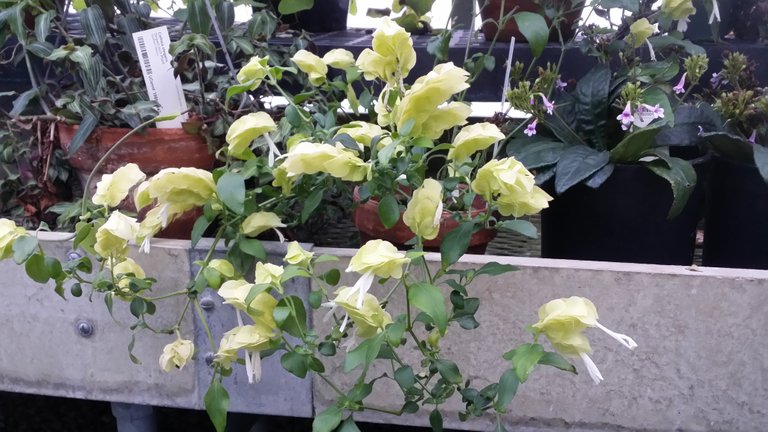
Thanks @ctrl-alt-nwo
Have a great day.
@ctrl-alt-nwo

This is wonderful garden and so really. that is helpfully info...
Resteem
magoo-2 found a series of multi accounts of a same owner is following your articles to cheat your generous rewards.
magoo-2 found these accounts are suspicious & can be multi accounts of a single owner. Conclusion is based on last 30 days transactions:
@yobot
@minoservice
magoo-2
Check our latest multi comment spam update report
That is a amazing garden & really looks for flowers. the great for the
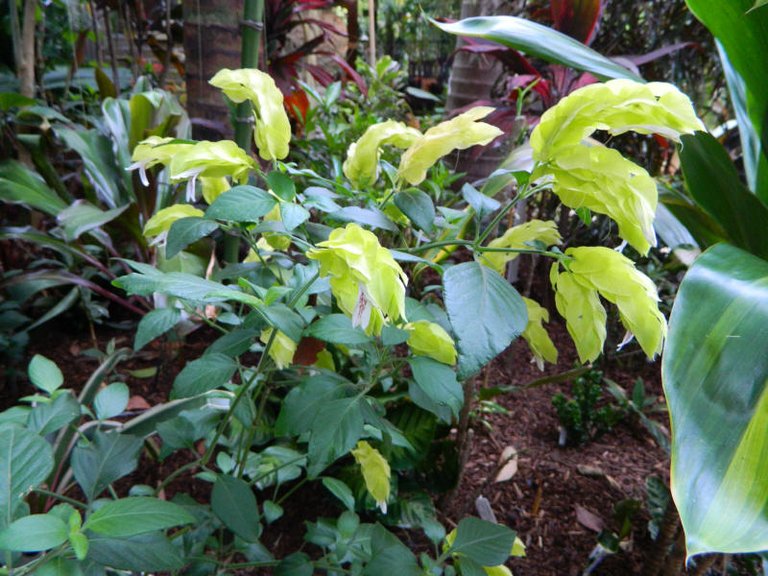
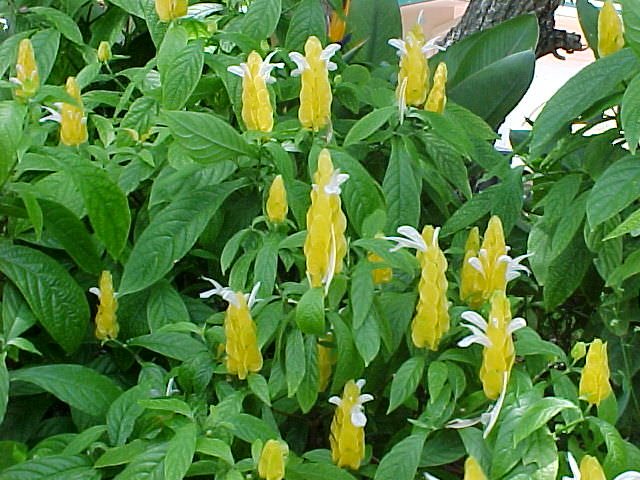
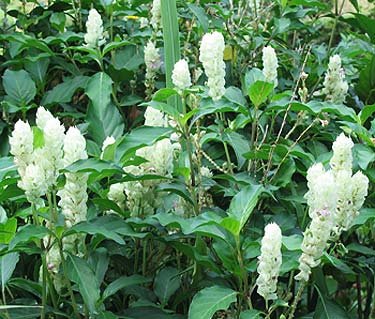
Yellow Shrimp Plant information.
100% like and resteem
To be honest never heard of this particular plant and never seen it before as well
While it sure is a great beauty to look at :)
It does reminds me that there are plenty of things out there to be still that I need to see :)
Thanks for the shots buddy and for the information :)
A beautiful plant, my friend and bizarre bracts of justicia, hiding not too impressive white flowers and glossy solid foliage give the plant a smart and somewhat exotic look. Demanding to care, but not to the growing conditions, the beauty of the justice-jacobinia is one of the most fashionable universal plants, in which both leaves and flowering are good. This is a great soloist for living rooms, a self-contained and very festive accent, perfectly looking all year.
Maintaining a comfortable humidity for justicia is the main and most complex component of plant care. Justicia requires a constant moisture substrate, medium-frequent irrigation. Between the procedures only the upper part of the substrate should dry out, about 2-3 cm. Stagnation of water in the soil should be avoided, draining it immediately after watering from the pallets and always checking the drying of the top of the soil before the next watering. The drought for justicia is unacceptable.
This culture is better to be transplanted annually, regardless of the age of the justice itself. The transplant is carried out at the usual time, in the spring (in March, not later than the first decade of April). The only exception is the justicia of the floribund, which is transplanted immediately after flowering, in winter. When transplanting, you need to act carefully, trying to cause minimal damage to the root system of the plant. For all justicia, except past rejuvenation, the capacity should be replaced by a large one. Thank you @ctrl-alt-nwo
https://www.botanichka.ru/article/pestryie-i-pyishnyie-yustitsii/
How To Grow Shrimp Plants – Growing Information And Shrimp Plant Care
Shrimp Plants The Mexican shrimp plant, or Justicia brandegeeana, is a native of Guatemala, Honduras, and as its name implies, Mexico. It is an evergreen shrub that rarely grows more than 3 or 4 (1 m) high and about as wide and thrives in the understory, a partially shaded area of tropical forests. The plants grow in many stemmed clumps and in USDA plant hardiness zones 8-11 growing shrimp plants in gardens has become so prevalent, it has now naturalized in many areas. This is largely due to the ease of shrimp plant propagation. The stems, which tend to become leggy with age and the sparse oval, green leaves, sometimes speckled with white, are not particularly attractive, but the bracts, which hold tiny and insignificant white flowers, are definitely eye catching. Each stem is tipped by a spike of light pink to rusty red bracts that arch into a form that looks remarkably like shrimp. There are cultivars of yellow and lime green as well. If you live in zone 8-11, growing shrimp plants can be a welcome addition to your landscape. They are easy to grow and will thrive in the warm temperatures of the south. Once established, they will even survive the occasional hard frost, dying back to the ground and sprouting again when warm weather returns.
Developing Information and Shrimp Plant Care While these wonders aren't fastidious, there are a couple of things you should think about how to look after a shrimp plant to take full advantage of your bush. It does best in loamy or sandy soil that is very much depleted. It doesn't do well with wet feet. Very much established plants are reasonably dry season tolerant, however like most tropicals, it flourishes in high mugginess. While they will develop in full sun to halfway shade, developing shrimp plants where they get morning sun is perfect. They require the sun to draw out the brightest hues and, yet, an excessive amount of sun will make the hues blur too early.
Shrimp Plant in Pots For those nursery workers past Zone 8, planting shrimp plant in pots can give you an indistinguishable tropical impact from your southern neighbors. They make great yard plants or their pots can be settled in among the other blossoming plants in a bed. Planting shrimp plant in pots has the extra advantage of having the capacity to bring this blossoming magnificence inside when the climate turns cool. They will keep on blooming throughout the entire winter in a brilliant, radiant window; and with respect to indoor shrimp plant mind, all they require is a decent gardening soil and an intermittent measurement of manure. Like their open air brethren, they should be trimmed routinely to keep from winding up too straggly.
https://www.gardeningknowhow.com/ornamental/shrubs/shrimp-plant/growing-shrimp-plants.htm
it's a good bush for a garden but most likely the russian climate will be bad for it :)
Yes, i think you are right !
your describing style really very impressible.i like your every work.because your work anytime perfect and real.everyday i am got alots of new idea of various kinds of flower.flower always main symbol of nature beauty. this Justicia common name shriamp plant very attractive flower and we can growing to doing our house garden this amazing plant any house roof. your showing shiram plant just fantastic.hanks to sharing for your awesome creativity.i am always attracted them.i want you stayed anytime live long happily in your whole life.i wish that you success being your future and your all dreams comes true.may god bless you.my best wishes anytime with you.all the best.keep it up..take care yourself and best of luck of your great work.. my good friend.. @ctrl-alt-nwo
magoo-2 found a series of multi accounts of a same owner is following your articles to cheat your generous rewards.
magoo-2 found these accounts are suspicious & can be multi accounts of a single owner. Conclusion is based on last 30 days transactions:
@timuann
@rahulsen
magoo-2
Check our latest multi comment spam update report
Glad that you again post about your passion - flowers. This Shrimp plant looks nice and is something I never seen before. When you look good at it it really looks like some yellow shrimp :-)
Keep us posted of wonderful plants!
Indeed, these plants are similar to shrimp. Unfortunately, because of the climate in our country, we are growing Yusitia only at home. The main problem of justice is the proper wintering so that there is enough light and the temperature is not higher than 18 ° С. If the frames on the windows are wooden, this temperature is not difficult to maintain, it is more difficult with plastic windows and with large plants that do not like to fit on a small window sill. In this case, the plant will either have to be given, where wintering can be cool and light, or carried to the landing, if there is light and the temperature in winter is not higher and not lower than 15-18 ° C.
https://iplants.ru/justicia.htm
Very interesting shots great info steemians shared on your post so nice to discover about it
Golden Shrimp Plant: How To Care For Pachystachys Lutea
The Golden Shrimp Plant whose botanical name is Pachystachys lutea is an upright tropical evergreen shrub that attains a mature height of 36 to 48 inches. Its showy, orange, gold, or yellow flowers that bloom during the summer the bracts resemble a shrimp’s layered scales, particularly the ghost shrimp.
Over the years, the Golden Shrimp Plant, sometimes called yellow shrimp plant has grown in popularity in northern European countries as well as some parts of the United States. The golden shrimp plant makes a great landscape perennial as well.
Native to the subtropical regions of Peru, it grows quite happily outdoors so long as you provide a sheltered, frost-free area in moist and well-drained soil.
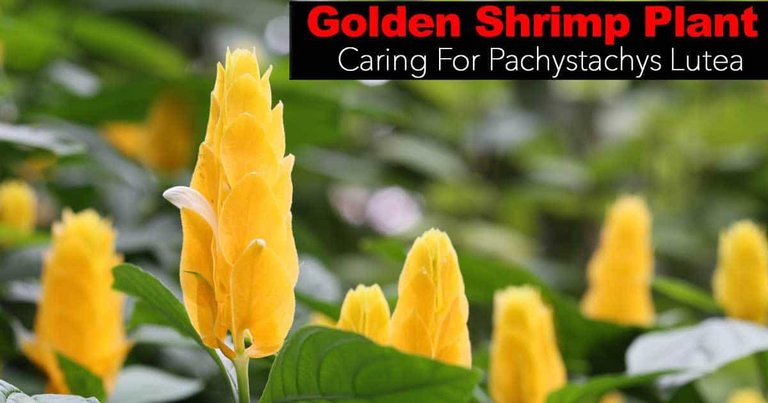
As a houseplant, ensure plants receives as much light as possible and position them in an area with high humidity and full light.
It even performs well if cultivated as an annual bedding plant. The plant benefits from regular misting in dry conditions over the hottest months of the year.
Add Pachystachys lutea to your ever blooming houseplant collection. It makes quite a showy bush with lush leaves. Keep the “shrimp plant” in shape with regular pruning or grow it out to a large specimen in a pot.
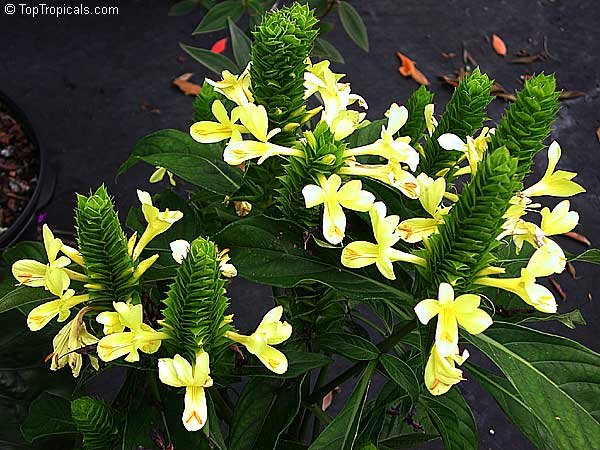
ips For Caring For Your Golden Shrimp Plant
Where Does Pachystachys lutea grow Best?
Pachystachys lutea prefers full sunlight. So make sure to give enough time for the plants to receive direct sunlight.
However, in climates with hot summers it benefits from afternoon shade. The plant grows in almost any kind of properly drained soil including loam, clay, sand, or even slightly acidic or alkaline soil. However, it does not enjoy beach-side planting as it doesn’t handle salty soil well.
Watering Needs Of Shrimp Plants
The Golden Shrimp plant does not handle drought periods for a long time. They tend to soak up quite a bit of water in the warm months. Even though the plant tolerates moist soil, it does well when the surface of the
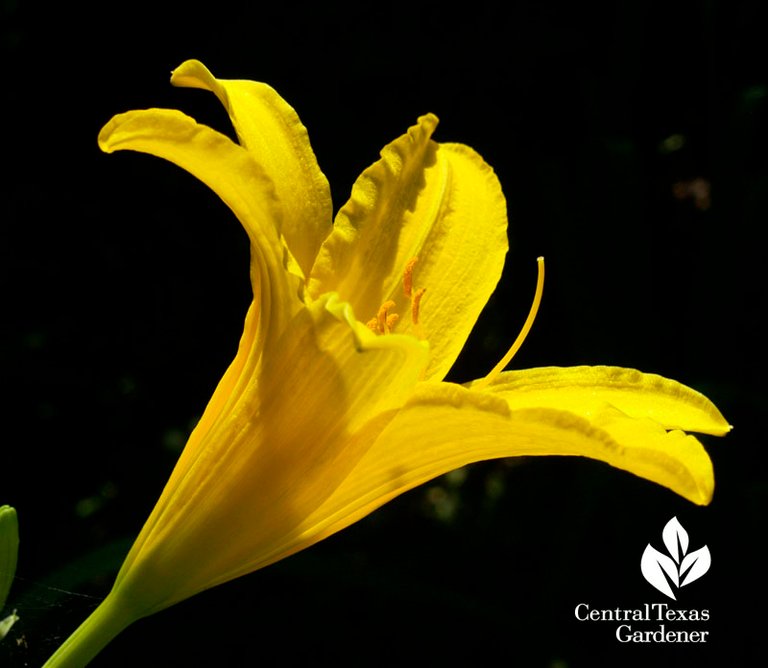
soil dries slightly between waterings, particularly in the winter months.
https://plantcaretoday.com/golden-shrimp-plant-care-pachystachys-lutea.html
magoo-2 found a series of multi accounts of a same owner is following your articles to cheat your generous rewards.
magoo-2 found these accounts are suspicious & can be multi accounts of a single owner. Conclusion is based on last 30 days transactions:
@moniristi
@shishiristi
@aflatunnisa
@hafez
@shihabieee
@mrashik
magoo-2
Check our latest multi comment spam update report
This plant grows best with full sun for most of the dayThis plant requires or will tolerate shade during the heat of the dayThis plant will tolerate some drought, but benefits from periodic wateringThis plant needs a thorough, deep weekly watering, Double icons require boggy or wet conditionsHousePlant IconHummingbird PlantButterfly FlowerWhite flowering plantPachystachys luteaHow to Use the Plant Care Icons at The Garden Helper


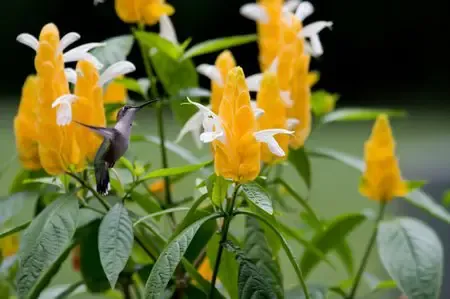
Golden Shrimp Plants are also known as Golden Candle plants or Lemon Lollipop Flowers.
They are 18"-24" tall, shrubby plants that form clumps of upright stems that are each tipped with brightly colored, 4" golden yellow bracts that are adorned with small, creamy white flowers. The flowers are short lived, but the bracts will last for many weeks. They have deeply veined, lance shaped green leaves that grow to about 6" long.
In zones 10-12 where they are hardy, Golden Shrimp Plants are popular as landscape plants that bloom nearly non-stop all year. In cooler zones they are sometimes grown as annual plants, but are more often grown in pots or planters and kept as house plants.
Growing Requirements for Golden Shrimp Plants
In the garden, Golden Shrimp Plants should be planted in full sun to partial shade.
They should be grown in slightly acidic, fertile, well-drained soil.
Prune back hard (by up to a half) in early spring, to induce branching.
Golden Shrimp Plants are exotic and beautiful additions to any house plant collection.
Indoors, they will grow best when they are kept in a draft free area where they will receive full sun in the morning and bright, indirect light during the remainder of the day. They bloom best when daytime temperatures are 65°-80° during the growing season, but are happy with 55° during the winter months.
Keep the soil evenly moist, using room temperature water that has been allowed to sit for 24 hours so that chlorine or other harmful chemicals have dissipated from it. Reduce watering in the winter.
Mist the foliage frequently during the summer months, using room temperature water.
Golden Shrimp Plant can be easily propagated with 4"-6" softwood or
semi-ripe cuttings taken from non-blooming shoots in late spring or early in the summer.
Provide additional humidity for the cuttings by enclosing the pot with a plastic bag over a wire frame, or keeping the cuttings in a terrarium until they are well rooted and growing. Keep them in bright, indirect light or under fluorescent grow lights.
Remove dead leaves from the cuttings promptly!
http://www.thegardenhelper.com/golden_shrimp.html
magoo-2 found a series of multi accounts of a same owner is following your articles to cheat your generous rewards.
magoo-2 found these accounts are suspicious & can be multi accounts of a single owner. Conclusion is based on last 30 days transactions:
@moniristi
@shishiristi
@aflatunnisa
@hafez
@shihabieee
@mrashik
magoo-2
Check our latest multi comment spam update report
@ctrl-alt-nwo
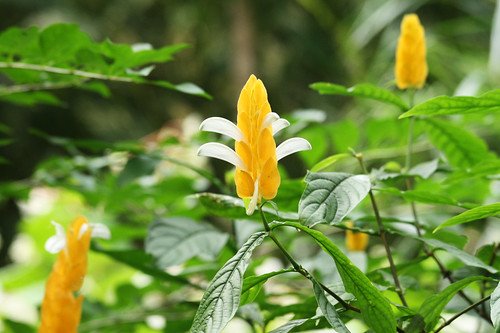
Wonderful Australia Yellow Shrimp Flowers Plant and this is valuable article.
magoo-2 found a series of multi accounts of a same owner is following your articles to cheat your generous rewards.
magoo-2 found these accounts are suspicious & can be multi accounts of a single owner. Conclusion is based on last 30 days transactions:
@moniristi
@shishiristi
@aflatunnisa
@hafez
@shihabieee
@mrashik
@shavishtha
magoo-2
Check our latest multi comment spam update report
Very interesting shrimp plant but I could not make tempura out of these flowers.
Now I am expecting ‘crab plants’ and ‘fish plants’ from your next posts!
Cheers.
How about a Clitoria plant ? In Thailand, they make a syrupy blue drink from the flowers. I bet you would enjoy that Tempura !!
Oh! We call these butterfly pea flowers or dok-anchan.
They make very good herbal tea for soothing the nerves and eyes. These could be added to salad and put in omelette too.